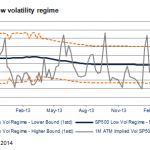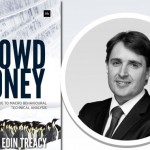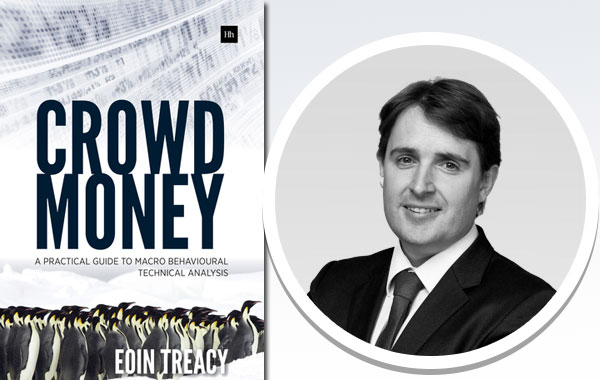Most advisers say it’s crazy to invest in bonds. But then they would, wouldn’t they? Nearly all of them, and their clients, missed out on what has been one of the greatest bull markets in history for this asset class.
According to BCA Research, since September 1981 the total return for holders of 30-year US Treasury bonds has averaged 8.8 per cent a year in real terms. That’s just one example.
Bonds have also made equity investment seem foolish. Over the past decade the total return on ten-year Treasuries, for example, has averaged more than 16 per cent a year; American stocks, less than 6 per cent a year.
However, is this perhaps the time when the massed ranks of bond-market bears are right, for a change?
Here’s what they are arguing:
- Interest yields that popular bonds offer are so low – often negative in real terms, after allowing for inflation – that they offer no reward for the risk of investing in them. When inflation takes off – as it must, eventually, given the scale of money printing — their capital values will be savaged.
- Capital gains delivered by bonds are the reciprocal of their falling interest yields. But those yields are now so low that there is little or no potential for future capital value increases.
- Dividend and earnings yields on the shares of most sound listed companies are so much higher that they offer a far more attractive opportunity than bonds – higher income, lower risk, and a good measure of protection against future inflation.
There is some validity in these arguments. But they are largely based on assumptions that the global financial system is recovering from its crisis and that the world economy has been emerging from a normal recession.
The reality is very different:
- The burden of debt that endangers the financial system is not being addressed – instead policymakers believe they can reduce debt by creating more of it! The finances of governments and banks are on a life support system of money printing and related easy credit – which is like expecting cancer patients to be cured by morphine.
- This dangerous bubble, with central banks driving down official interest rates to 300-year lows, is not solving the problem of economic growth. It is, as one commentator puts it: “A tool that forcibly impoverishes savers in order to perpetuate a broken banking system.”
Some items on the menu
|
Recent |
Current |
Curr- |
Years |
|
|
price |
yield % |
ency |
to red. |
|
|
German Bund 2.5% 07/44 |
108.21 |
2.14 |
EUR |
32 |
|
UK Gilt 4.5%12/42 |
131.70 |
2.92 |
GBP |
30 |
|
US Treasury 3% 05/42 |
108.38 |
2.59 |
USD |
30 |
|
GE Capital 6.88% 01/39 |
133.60 |
4.65 |
USD |
28 |
|
Indonesia 6.63% 02/37 |
125.50 |
4.84 |
USD |
25 |
|
Goldman Sachs 6.13% 02/33 |
104.02 |
5.79 |
USD |
21 |
|
Norway 2% 05/23 |
102.15 |
1.78 |
NRK |
11 |
|
Australia 5.75% 07/22 |
125.21 |
2.84 |
AUD |
10 |
|
Canada 2.75% 06/22 |
109.98 |
1.65 |
CAD |
10 |
|
Sweden 3.5% 06/22 |
120.50 |
1.28 |
SEK |
10 |
|
Mexico 8.3% 02/20 |
115.50 |
3.15 |
EUR |
8 |
|
GE Capital 5.38% 01/18 |
116.07 |
2.23 |
EUR |
6 |
|
Nomura Secs. S3 2.28% 03/18 |
100.48 |
2.19 |
JPY |
6 |
The banks that caused the crisis are protected, subsidized, allowed – even incentivized – to continue with their gambling activities, leveraged off massive state support. So the dangerous phenomena that are “too big to fail” grow even bigger.
- The problems of sluggish demand and financial stresses that discourage corporate risk-taking and employment creation aren’t being tackled effectively. Instead, governments favour massive waste of public money on saving zombies and sustaining unaffordable benefits – while imposing the even higher taxes and tougher regulations that discourage enterprise.
Investors are not holding bonds or even buying more because they expect to earn much interest. They aren’t that crazy. They are seeking to protect their capital. Bonds are viewed as lower-risk vehicles for that than the alternatives.
A bond whose maturity value and regular income payments is guaranteed by the US Treasury seems to be a good way to do that if you don’t trust highly volatile gold (which pays no interest); or the shares of supposedly reputable mega-companies (Barclays bank and the GSK pharmaceutical giant have just been fined $3½ billion for dishonest business practices).
A bond backed by Germans’ famous thriftiness looks like the lowest-risk way if you want or need to have liquid assets denominated in euros. As The Economist put it: “To a Greek worried that his savings will lose 40 per cent of their value if they end up in drachmas, a near-zero yield on German government bonds still looks like a good deal.”
British government securities freely tradeable on the world’s biggest international capital market (London) seem politically safer than securities subject to control by the American authorities, if you’re a Mideast oil mogul or a Chinese billionaire.
There are thousands of bonds traded on capital markets offering investment opportunities for conservative investors, especially income-seekers.
Their prices – reflected in the current annual yield – fluctuate according to changes in interest rates generally, the credit rating or risk of default, and proximity to redemption date.
If you buy, say, a 30-year bond, that doesn’t mean you’ll be locked in until the redemption date, when the issuer is committed to repay the amount of capital originally borrowed. You can sell the security any time on the open market, for more or less than that maturity value.
Some investors are misled by current yields – the interest paid each year divided by the current price at which the bonds may be bought – that are rather higher than the average yield will be if the bonds are held to redemption date. That’s because the current prices are higher than redemption amounts.
As a bond moves closer to redemption date, its price will move towards the redemption value. If its price is currently higher, as is usually the case in the current environment, it will decline. The average total annual return, encompassing both interest payments (positive) with decline in capital value (negative), will be lower than the current yield.
For example, the 6.5 per cent Bund maturing in 2027 is currently priced at about 163 with an annual interest payment equivalent to about 4 per cent. But if you take into account the future decline in capital value from 163 to 100 at redemption date, the total return will average less than half that.
Very low yields mean bonds seem highly-priced. But low rates don’t tell you anything reliable about the risk to your capital in a bond. Yields on ten-year JGBs (Japanese government bonds) fell below 2 per cent in the late Nineties and have ranged sideways ever since. Foreign speculators who gambled that yields would rebound, and capital values plunge, have been repeatedly burned.
Low yields don’t even deny the potential for some future capital gains. They could go lower… much lower. In Germany, and in Britain, some investors have even been prepared to buy short-term bonds offering a small negative yield, being willing to pay a price for security of capital.
Yields on the most popular sovereign bonds – Treasuries, Bunds, Gilts and JGBs – will continue to stay very low for a long time, because governments and central banks will stick with low official interest rates and money printing.gambling activities, leveraged off massive state support. So the dangerous phenomena that are “too big to fail” grow even bigger.
this is the first article, Doses of “morphine” numb the pain, but don’t cure, to follow
CopyRight – OnTarget 2012 by Martin Spring







